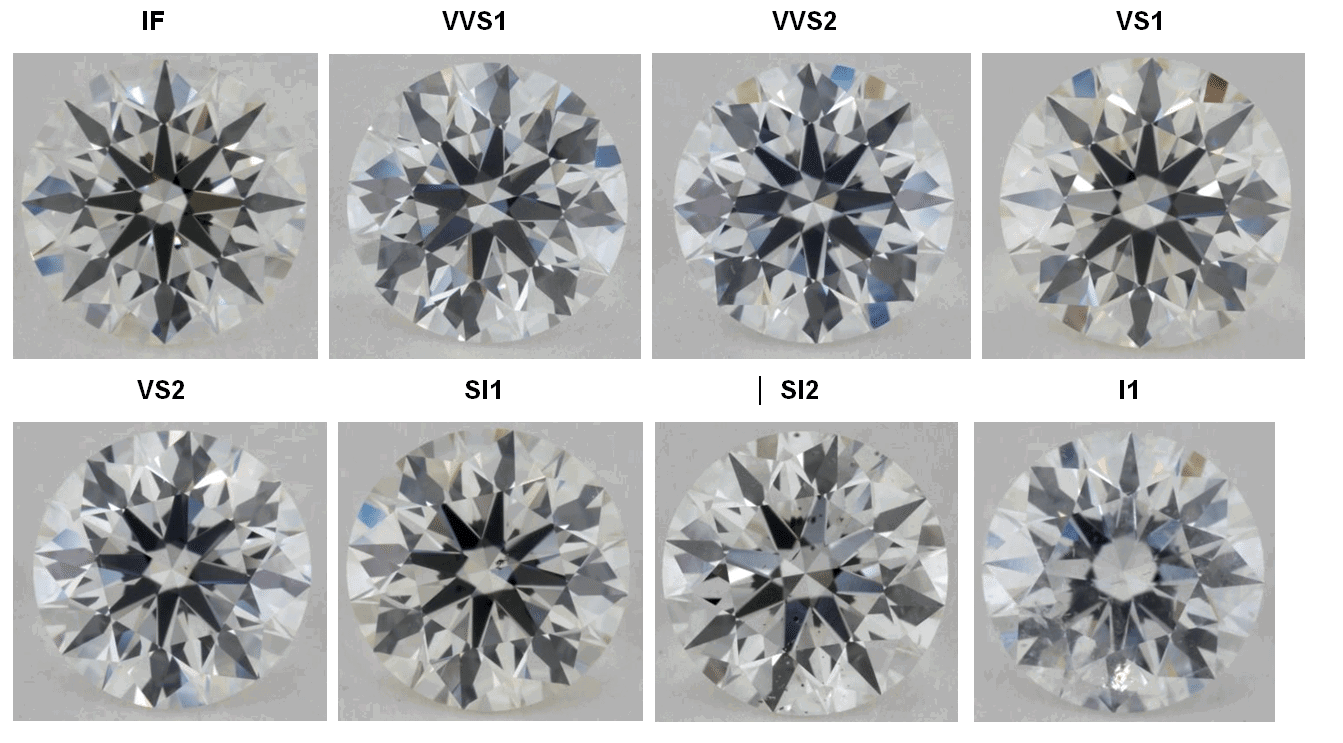Diamond Clarity: What You Need to Know

Diamond Clarity: What You Need to Know
When you're in the market for a diamond, clarity is one of the most critical factors to consider. It's a primary determinant of a diamond's beauty, value, and overall appeal. Diamond clarity refers to the absence of inclusions and blemishes. Inclusions are internal characteristics while blemishes are surface imperfections. The clarity grade ranges from Flawless, with no inclusions or blemishes visible under 10x magnification, to Included, which contains inclusions that are visible to the naked eye. Understanding clarity is essential for making an informed diamond purchase.
The Basics of Diamond Clarity Grading
The Gemological Institute of America (GIA) developed a clarity scale that is widely used in the industry. This scale includes 11 grades, which are, from highest to lowest: Flawless (FL), Internally Flawless (IF), Very Very Slightly Included (VVS1 and VVS2), Very Slightly Included (VS1 and VS2), Slightly Included (SI1 and SI2), and Included (I1, I2, and I3). Each grade represents a range of visibility, number, and size of inclusions.
Choosing the Right Clarity for You
The choice of clarity is subjective and depends on individual preferences as well as budget. Most consumers opt for diamonds within the VS (Very Slightly Included) or SI (Slightly Included) ranges, as inclusions in these diamonds are often invisible to the naked eye, making them an excellent value. Diamonds in the VVS (Very Very Slightly Included) category are sought after for their near-perfect clarity yet come at a higher cost.
How Clarity Affects Price
Diamonds with higher clarity grades command higher prices. The rarity of Flawless and Internally Flawless diamonds makes them the most expensive. As you move down the scale, prices typically decrease, making SI and VS diamonds more accessible while still offering good clarity. It's important to balance clarity with other factors like cut, color, and carat weight, as these also influence a diamond's overall appearance and cost.
Understanding Inclusions and Blemishes
- Inclusions are internal defects such as crystals, feathers, or clouds. Their size, number, color, and location can affect a diamond's appearance and value.
- Blemishes include scratches, pits, and chips on the surface of the diamond. While some blemishes can be polished away, others can impact the structural integrity of the diamond.
Inspecting Diamond Clarity
Examining diamond clarity involves using a jeweler's loupe or microscope to inspect the stone under 10x magnification. This allows you to see the inclusions and blemishes that affect its grade. It's beneficial to request assistance from a qualified gemologist to understand the specific clarity characteristics of a diamond.
The Impact of Clarity on Diamond Appearance
While clarity can influence a diamond's beauty, it's one piece of the puzzle. A high-clarity diamond may still appear dull if it has a poor cut, while a diamond with lower clarity can look stunning if it has an excellent cut and color. The cut of the diamond often plays a more significant role in its overall brilliance and fire.
Advancements in Clarity Enhancement
Technological advancements have introduced methods for enhancing the clarity of diamonds. These treatments, such as laser drilling to remove inclusions or fracture filling to make them less visible, can improve the appearance of a diamond. However, enhanced diamonds should be disclosed as such, and typically hold lower value than untreated stones.
Making an Informed Decision
Choosing a diamond involves balancing multiple factors, including clarity, to meet your preferences and budget. It's crucial to view diamonds in person and compare different clarity grades. Certificates from reputable grading laboratories can provide trustworthy information about a diamond's clarity and overall quality, aiding in your decision-making process.
Conclusion
Diamond clarity plays a pivotal role in a diamond's beauty and value. Understanding the clarity scale and how it affects a diamond's appearance allows you to make an informed choice that meets your needs and budget. Remember, the goal is to find a diamond that speaks to you, regardless of its clarity grade. With the right knowledge and careful inspection, you can select a diamond that will be treasured for a lifetime.
Whether you're drawn to the flawless allure of a Flawless grade diamond or the excellent value of a Slightly Included specimen, clarity is an essential aspect of your selection process. By considering clarity in conjunction with cut, color, and carat weight, you can ensure a well-rounded and informed diamond purchase.